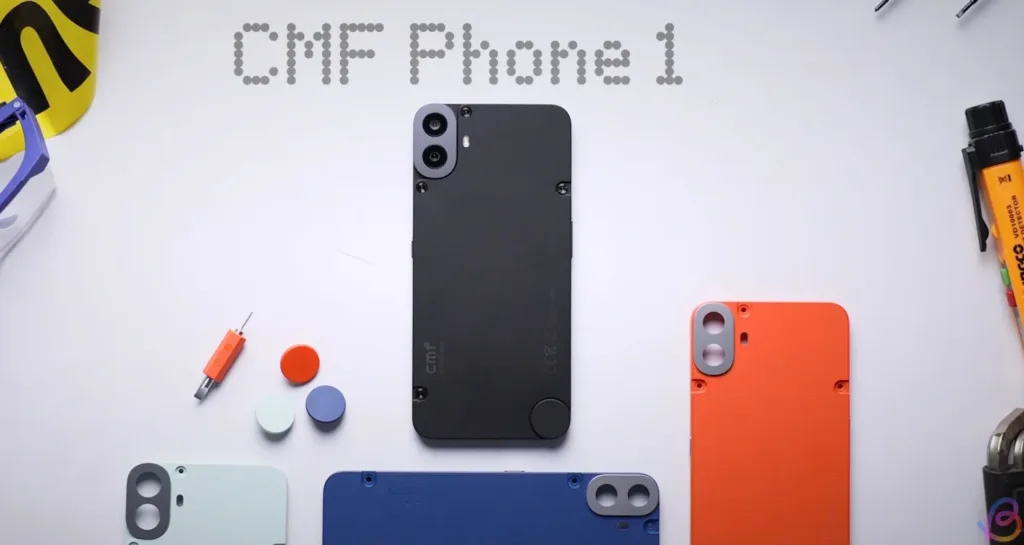
Nothing, a fashion-forward technology brand known for innovative product designs, passed on these genes to their sub-brand, which made waves with its initial device releases. When news broke that CMF by Nothing was developing its debut smartphone, teasing an image of a dial, fans anticipated something remarkable. Having had the chance to use the CMF Phone 1 early, I spent a week with this customizable gadget and now share my thoughts in this CMF Phone 1 review.
CMF Phone 1: Specs At a Glance
Before diving in, let’s quickly review the specifications of the CMF Phone 1:

CMF Phone 1: Box Contents
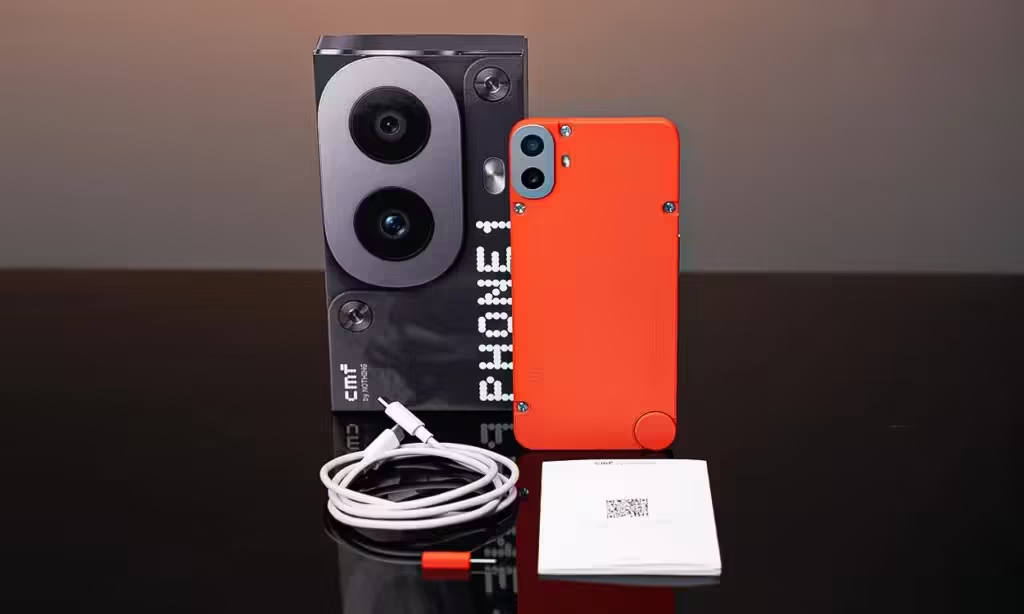
Here is the complete list of items included in the box with the CMF Phone 1.
- CMF Phone 1
- USB Type-C to Type-C cable
- Orange SIM card ejector pin
- User manual and other paperwork
CMF Phone 1: Build and Design

The design of the phone is unconventional, particularly the back, which showcases exposed screws and includes a dial at the bottom. In the black variant we reviewed, this gives it an industrial aesthetic that I find very appealing.
With the bright orange back panel, the phone is sure to attract attention when taken outdoors. It’s worth noting that the back cover can be swapped out, offering customization options. The matte textured plastic back, along with the grooves in the dial, enhances grip and lends a premium feel to the CMF Phone 1, distinguishing it from other devices in its class.
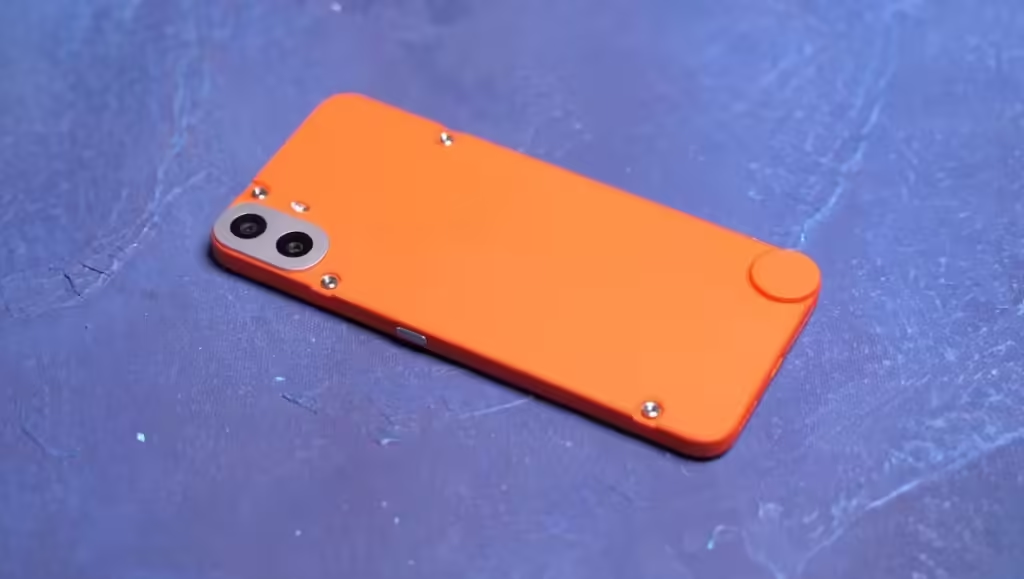
However, its large size, sharp edges, and exposed screw slots can lead to discomfort over time, especially when using it to scroll through Instagram Reels in bed. This issue is exacerbated by the phone’s 8 or 9-mm thickness (depending on the cover), which houses the volume rocker on the left and the power button on the right.

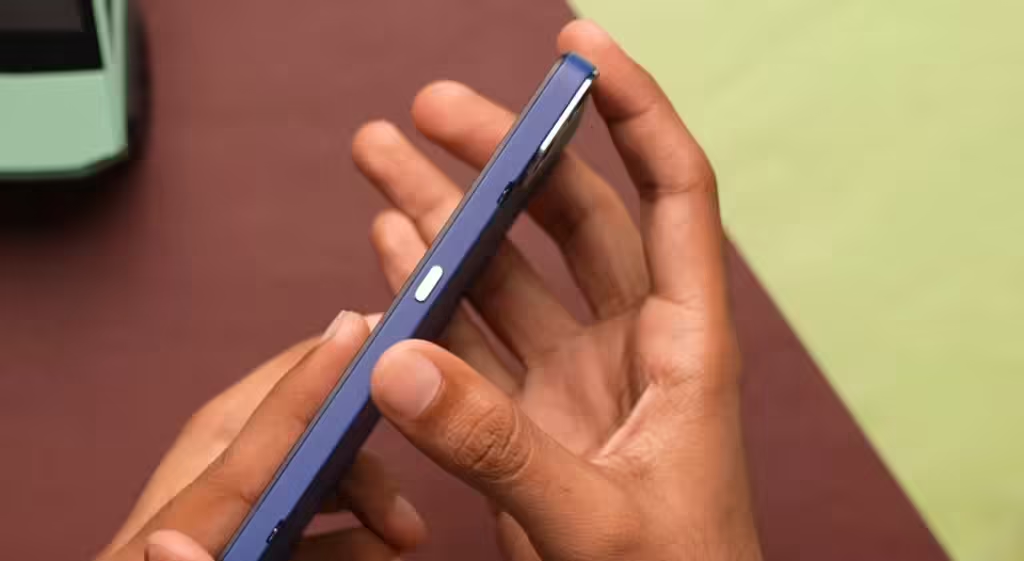
Using the phone with one hand is feasible but not optimal due to its boxy and heavy design. Users may find themselves relying on their pinky finger to support the bottom, where the USB-C charging port, a single mono speaker, and a physical dial are located on the right side.
Overall, the CMF Phone 1 boasts an industrial, almost prototype-like appearance that will appeal to enthusiasts but may not be preferred by casual users.
Replaceable Back Cover and Accessories
Let’s delve into one of the most anticipated features of the CMF Phone 1 – the interchangeable back covers. CMF taps into nostalgia by allowing users to swap out the back cover and attach different colored panels, reminiscent of the days of Moto G and Lumia devices. It harkens back to a vibrant era.
Swapping out the back cover gives the device a new look and feel. For instance, the orange one exudes boldness, while the mint green offers a calming vibe. Although the back is replaceable, the battery is not, which means you can’t simply swap it out for a quick recharge. While this might disappoint some users, carrying a spare battery isn’t always practical or safe.
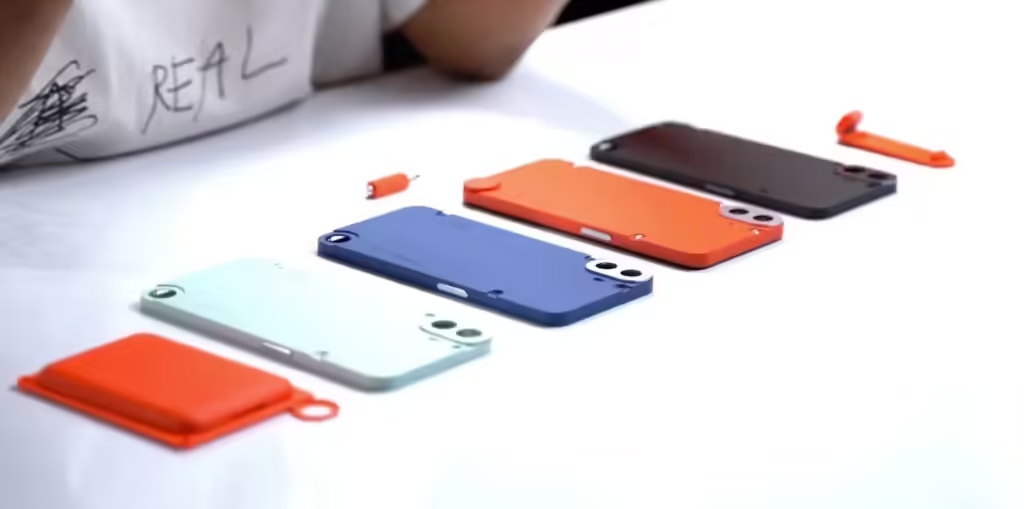
You’ll need to remove the five screws on the back of the phone to replace the covers. Unfortunately, the dial at the back also doubles as a screw. However, it serves a modular function, allowing you to attach various CMF Phone 1 accessories such as a stand, lanyard cable, or magnetic cardholder.
While it was enjoyable experimenting with different back covers and accessories, the process becomes tedious after a few rounds of removing and replacing screws each time you want to change the back cover.

In addition, there’s the risk of losing those screws and the dial, which I experienced within an hour of getting the phone (thankfully, I found them after a panicked search). The dial also poses a choking hazard if you have children who might handle the phone.
I appreciate CMF’s effort to introduce customization in this price range. However, I wish for a simpler implementation, akin to Nothing Phones. At the time of release, the selection of accessories and back panel colors is somewhat limited. I hope CMF will expand these options with new releases in the future.
CMF Phone 1: Display Quality
The CMF Phone 1 captures attention not only with its distinctive back but also with its tall 6.7-inch AMOLED panel on the front. Watching shows like The Boys or The Bear was a delightful experience on this phone. The screen exhibited no distracting color shifts or flickering throughout.
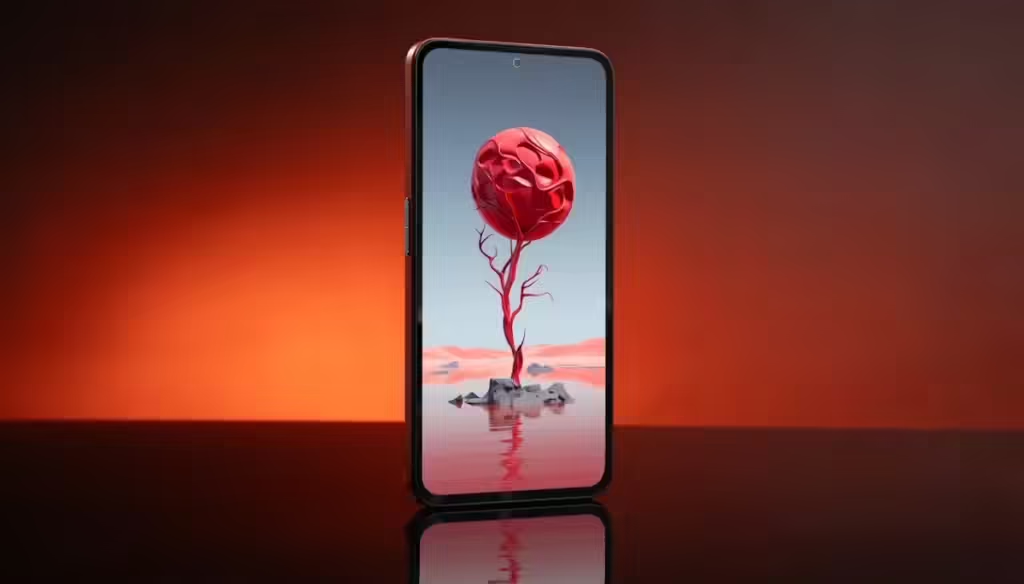
The 120 Hz refresh rate adds to the smoothness, delivering consistent performance without any noticeable jitters or slowdowns often seen in budget devices with high refresh rates. The brightness is suitable for overcast conditions in Delhi, though its performance under harsh sunlight remains uncertain.
For those interested in specifications, it averages 800 nits and can peak at 2000 nits. The fingerprint scanner, embedded under the display, proves to be quick and accurate.
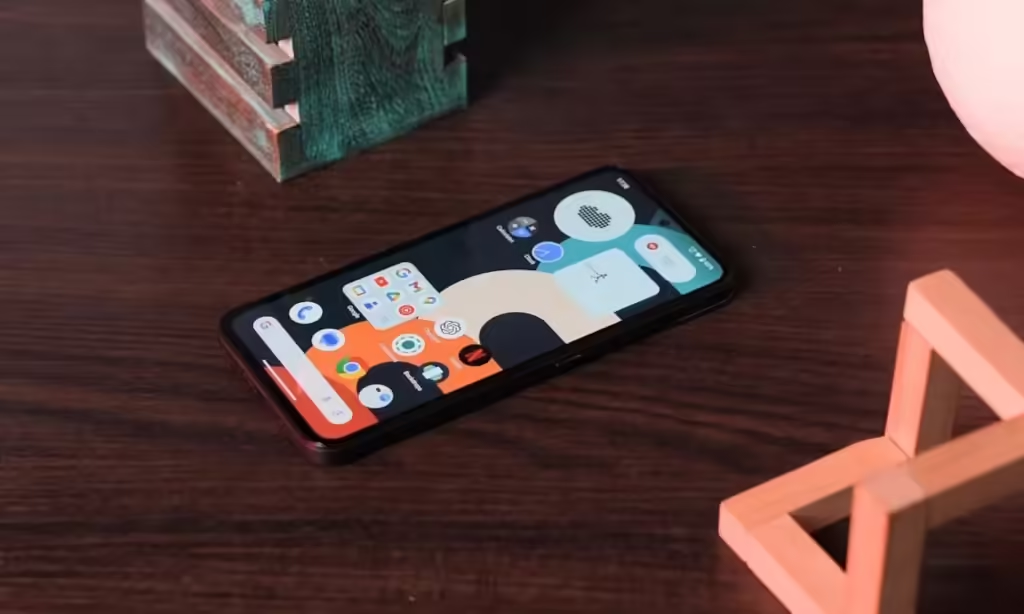
HDR support is included, and the display is protected by AGC DragonTrail Pro glass, though I recommend using tempered glass for added protection. The bezels are noticeably thick, including a prominent chin, but considering the phone’s price point, it’s commendable to have such a feature-rich display that would have been considered premium just a few years ago. Overall, the display fulfills all the essential criteria in this regard.
Speakers and Vibration
While enjoying content, I used earbuds because the phone only features a single speaker. It reaches adequate volume for calls, alarms, and notifications, but it detracts from the viewing experience. Despite invoking nostalgia, this is an aspect of phones I’d prefer to leave in the past.
The vibration motor reflects another area where cost-cutting is evident. The haptics feel rough and cheap, with a buzzing effect that’s rather unpleasant. Since Nothing OS also doesn’t leverage haptics much, I found it preferable to keep them turned off.
CMF Phone 1: Software Experience
The CMF Phone 1 operates on Nothing OS 2.6, built on Android 14. If you’ve used a Nothing Phone previously, you’ll find the full software experience here. True to the company’s name, “nothing” is omitted despite it being a budget smartphone, distinguishing it from practices of other brands (like Xiaomi).
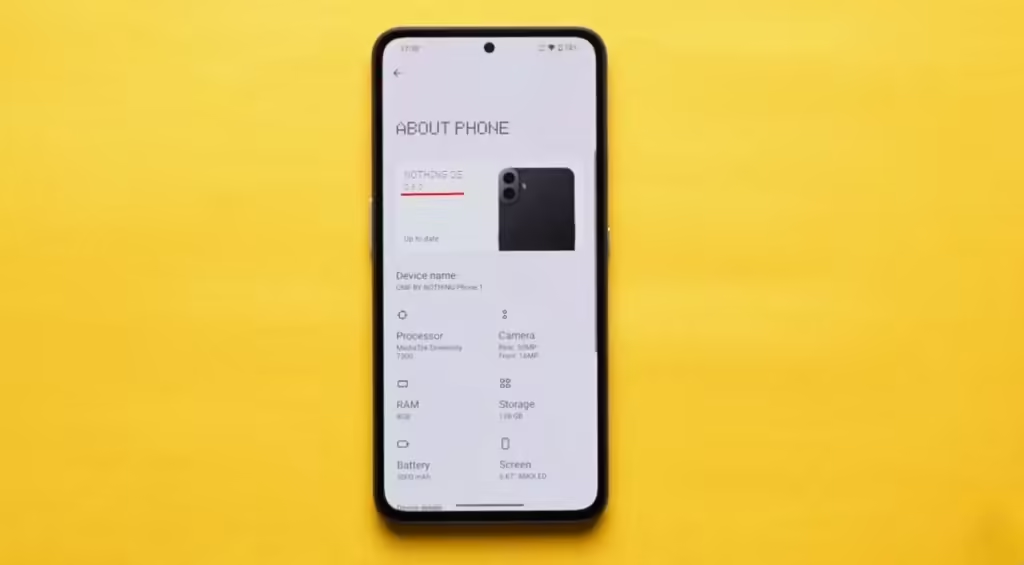
The CMF Phone 1 lacks an always-on display but includes a Glance feature that remains active for 10 seconds, similar to Xiaomi and Poco’s “AOD”. Personally, I didn’t find its absence bothersome until it was pointed out to me.
The OS delivers fluid animations while maintaining a stock Android appearance with Nothing’s unique touches. Nothing OS 2.6 introduces new features like Game Mode and AI Vivid mode in the Camera app. Remarkably, there’s minimal bloatware on the phone, including Netflix, which isn’t supported for HDR despite the display’s capability.
Thanks to its lightweight nature, the OS doesn’t strain the processor, ensuring smooth day-to-day performance. For updates, the company promises 2 years of Android updates, extending up to Android 16. With Nothing’s reliable track record in updates, this is undoubtedly a standout feature of the phone.
Performance and Benchmarks
As a brand for enthusiasts, Nothing and CMF understand that specifications are often the primary consideration for their audience when purchasing a phone. In competitive markets like India, this aspect plays a crucial role, with brands prominently displaying benchmark scores on promotional banners. It reflects our deep interest in math and numbers as consumers.
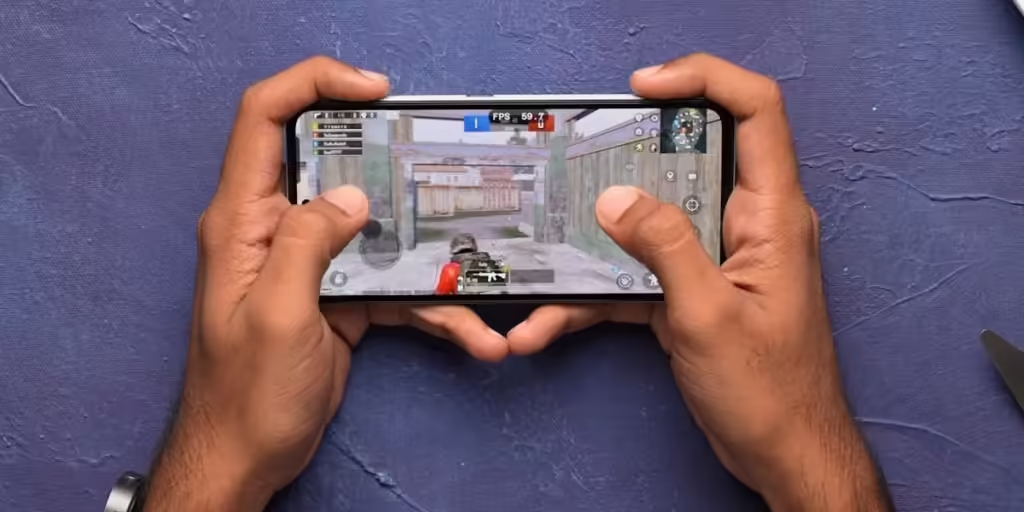
Fortunately, CMF didn’t compromise much on specifications with the CMF Phone 1, featuring the MediaTek Dimensity 7300 chipset. You can find detailed benchmarks in the linked article, but in essence, it represents an improvement over the Dimensity 7050. For a direct comparison, check out the differences between Dimensity 7300 and Dimensity 7050.
It’s worth noting that despite its name, the Dimensity 7300 chipset isn’t as powerful as the Dimensity 7200 Pro found in the Nothing Phone 2a (review). We have a thorough comparison of Dimensity 7300 versus Dimensity 7200 to clarify these differences. To navigate this complexity, let’s delve into benchmarks and real-world performance.
Benchmarks
Throughout this review, I conducted comprehensive benchmarks on the CMF Phone 1, including Antutu, Geekbench 6, CPU Throttling, and 3D Mark, to thoroughly test the phone’s performance capabilities. Below are the results for your convenience, but I recommend referring to our dedicated Dimensity 7300 benchmark guide for a more detailed analysis of the numbers and insights.
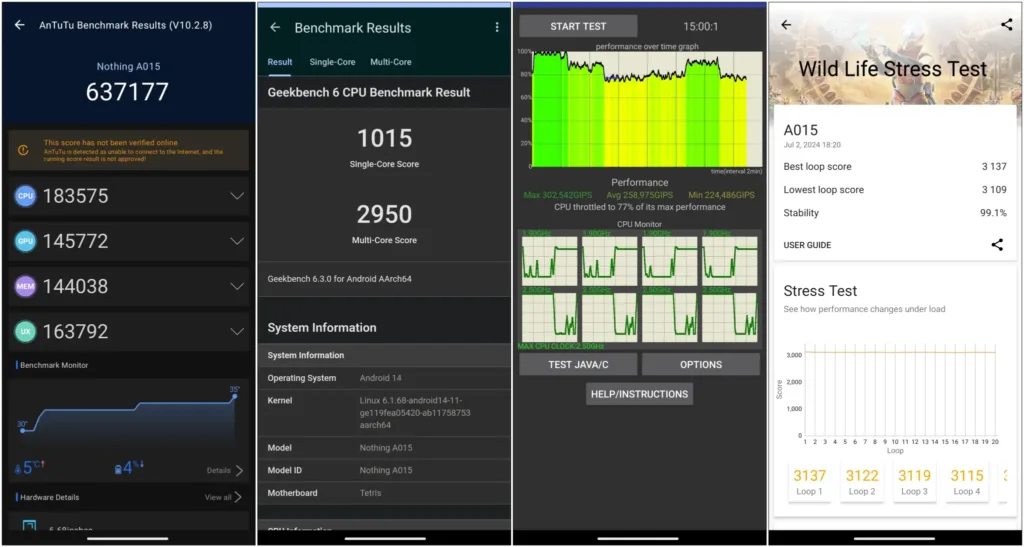
Day-to-Day Usage
As mentioned in the software section, everyday performance is solid. The phone operates smoothly without any noticeable slowdowns or lags during my usage. However, it isn’t lightning-fast, and app opening speeds are slightly sluggish. It’s important to manage expectations, as it doesn’t deliver flagship-level performance.
Gaming
Although not designed as a gaming phone, I took breaks from work to play all my favorite games on the CMF Phone 1. Below is a table detailing the games, settings, and maximum FPS achieved on the phone.

The gaming experience on this smartphone was not optimal, as expected, since it is not specifically designed for gaming. While it handled optimized games like COD Mobile and BGMI fairly well, more demanding games such as Genshin Impact and Warzone significantly impacted its performance. The new Game mode also failed to improve the situation. This is an issue that CMF should address in future updates.
Camera and Video Quality
The phone features a single 50 MP primary Sony IMX 882 sensor without optical image stabilization (OIS). Unfortunately, the other camera is just a depth sensor. Personally, I would have preferred at least an 8 MP ultrawide lens. For selfies, the front camera is a single 16 MP shooter. Without further ado, here are the camera results.
Day Time Photos
The 50 MP Sony sensor captures good photos in well-lit conditions. The color tone is generally consistent and natural, though some photos may appear slightly oversaturated. The sensor maintains good detail, even in cloudy situations with limited sunlight. However, zooming in can reveal a loss of detail in certain objects, breaking the illusion of clarity.



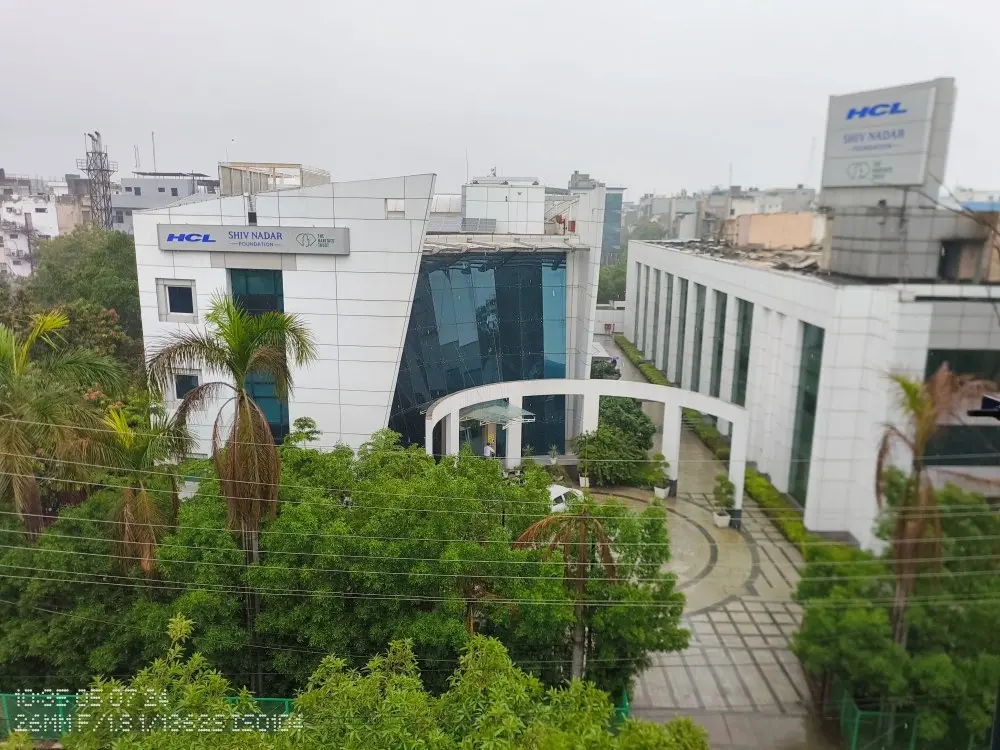

Night Time Photos
At night, despite lacking OIS, the CMF Phone 1 performed admirably. The samples show a good amount of detail in the Starbucks logo, the mural on the wall, and the PVR plaza. However, a blue tint is noticeable in each nighttime image. Additionally, some pictures exhibit visible grain, which could have been mitigated with the presence of OIS.

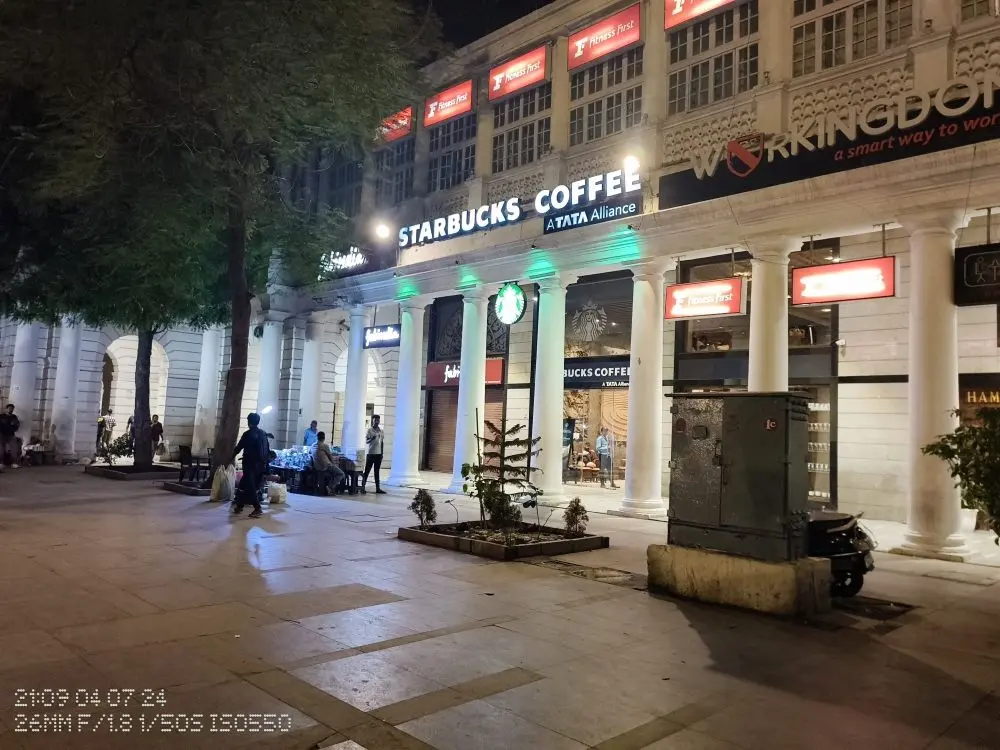

Selfies and Portraits
In selfies, some photos appear natural and quite appealing, while others seem artificially enhanced for some reason. The camera preserves facial details without applying any beautification filters, which is a plus, but the colors can sometimes look slightly off.
I appreciate how well it handles edge detection in portrait photos, managing to keep my hair separate from the background—something most phones at this price struggle with. The details are well-preserved, though there is a minor issue with colors, as it made my face appear a bit reddish.
The situation is similar with portraits taken using the primary lens. The depth sensor does not seem to provide any significant improvement to the portrait shots.
Video Quality
Regarding video capabilities, the rear camera can capture up to 4K at 30 FPS, relying on electronic image stabilization (EIS) due to the lack of optical image stabilization (OIS). During my review, the footage from the CMF Phone 1 was acceptable but exhibited occasional jitters. Videos weren’t smooth even at 1080p 60 FPS. On the bright side, there were no focus-hunting issues.
Overall, I would say the camera performs better than expected but suffers from consistency issues. This aligns with the typical experience of Nothing Phones, as even the 2a required several updates to improve camera quality.
Battery and Charging
Let’s discuss the battery life of the CMF Phone 1 as we reach the final part of this review. The phone features a 5,000 mAh battery. During my usage, which included playing heavy games, binging on Family Guy, and endlessly scrolling through reels, I achieved around 6 hours of screen-on time with 8% battery remaining.
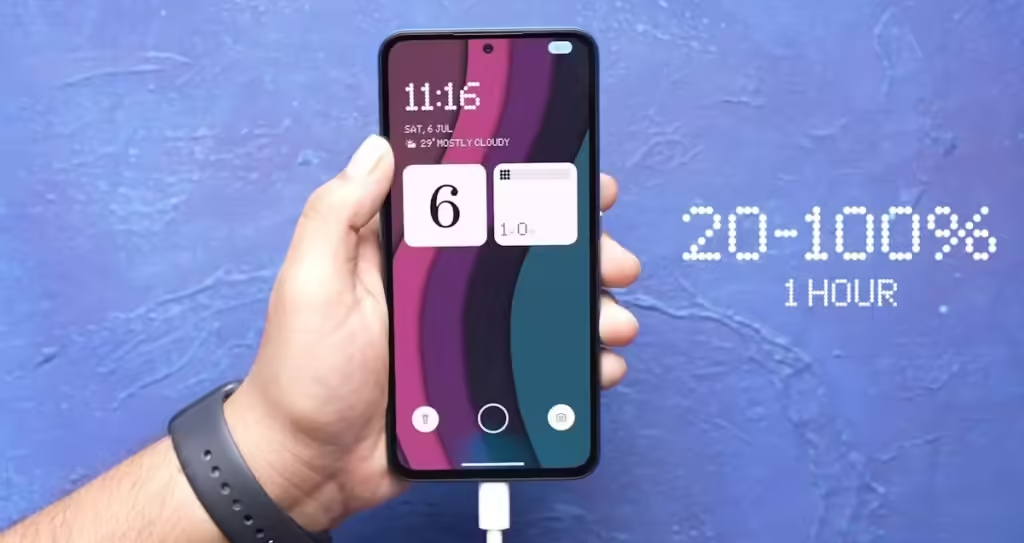
When it came time to charge, I discovered there was no charger included in the box. You can purchase a 33-watt official charger, which should fully charge the phone in about an hour and reach 50% in approximately 20 minutes.
Verdict: Should You Buy the CMF Phone 1?
Now, the crucial question arises: should you purchase the CMF Phone 1? First, let me commend Nothing and the CMF team for attempting something new in this segment. As Carl said when Nothing was first established, the goal was to do something different in the industry. I believe they have succeeded with this device.
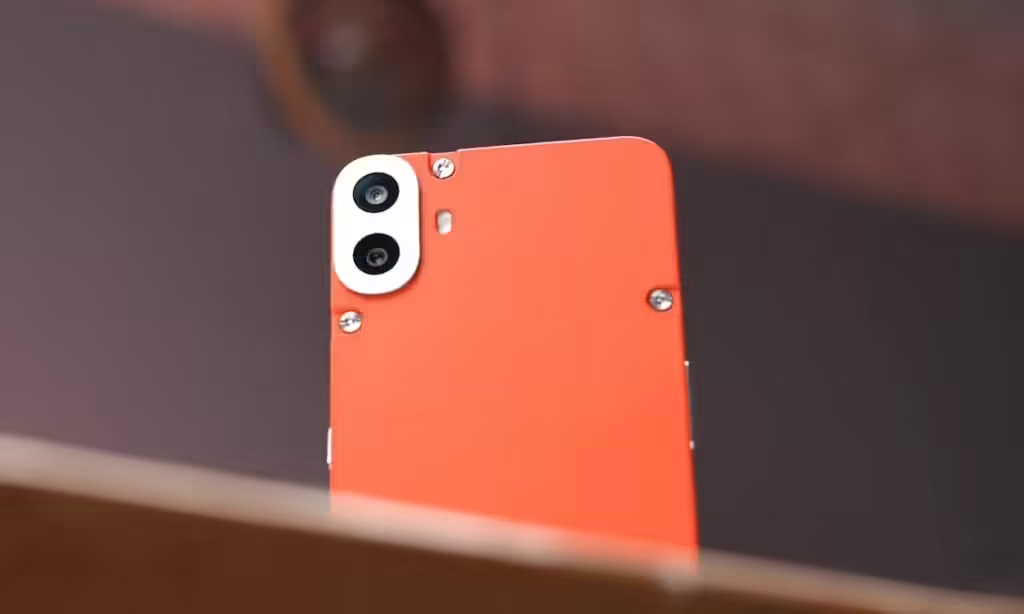
However, the CMF Phone 1 isn’t aimed at the average consumer and targets enthusiasts who often opt for higher-priced phones. If you need a secondary device or one for your parents, a budget phone would typically be more suitable. The CMF Phone 1’s bulky size, intricate back cover system, and average camera performance make it less than ideal for these scenarios.
It’s a clear winner if you have a strict budget under Rs 16,000 and prioritize software updates, a great display, and customizable back covers. However, if you’re looking for a comfortable everyday phone, you may find better options by spending a bit more.
To help you explore other viable options, we have conducted extensive comparisons of the CMF Phone 1 with its peers. For detailed comparisons, please check out the links below:
What are your impressions and thoughts on the CMF Phone 1? Does it meet your expectations from Nothing? Share your thoughts in the comments below.
Pros and Cons
The Pros
- Innovative smartphone design
- Interchangeable back covers with accessory support
- Large and vibrant Full HD+ 120Hz display
- Smooth and streamlined software experience
- Reliable performance for daily use
- Decent battery longevity
The Cons
- Charger not included in the box
- Mono speaker only
- Uncomfortable due to screw indents
- Average camera performance
- Poor quality vibration motor
Final Verdict
Build and Design
Display Quality
Software Experience
Performance
Camera and Video Quality
Battery and Charging
AzMo Tech Score
The CMF Phone 1 boasts a distinctive design reminiscent of the era of removable back covers and customizable accessories. It features a feature-rich display, offers one of the best software experiences with Nothing OS, delivers good performance, all within a budget-friendly price bracket, making it a compelling choice for enthusiasts.



